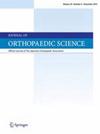Associations of frailty with RA-ILD and poor control of disease activity in patients with rheumatoid arthritis: A multi-center retrospective observational study
IF 1.4
4区 医学
Q3 ORTHOPEDICS
引用次数: 0
Abstract
Background
This study aimed to investigate factors associated with frailty in rheumatoid arthritis (RA) patients.
Methods
A total of 656 RA patients were evaluated using data from an observational study in 2022. Among these patients, 152 with frailty were assigned to the frailty group, and 504 without frailty were assigned to the non-frailty group. Patient characteristics were compared between the two groups by univariate analysis, and factors associated with frailty were assessed by logistic regression analysis. Patient characteristics were also compared between patients with RA-associated interstitial lung disease (RA-ILD) (n = 102) and those without RA-ILD (n = 554).
Results
The frailty group was older (mean: 73.6 vs. 66.8 years) and had a higher DAS28-ESR (3.67 vs. 2.66), a higher HAQ-DI (1.13 vs. 0.32), and a higher rate of RA-ILD (25.0 vs. 12.7 %) than the non-frailty group. Age (OR: 1.03, 95 % CI: 1.01–1.05), HAQ-DI (3.22, 2.28–4.56), DAS28-ESR (1.44, 1.19–1.75), and RA-ILD (2.21, 1.24–3.94) were associated with frailty. RA patients with RA-ILD were older (73.3 vs. 67.5 years) and had a higher DAS28-ESR (3.30 vs. 2.80), a higher HAQ-DI (1.19 vs. 0.32), a higher proportion of frail patients (37.3 vs. 20.6 %), lower MTX use (26.5 vs. 62.9 %), and higher steroid use (44.1 vs. 26.8 %) than those without RA-ILD.
Conclusions
Maintaining reasonable control of disease activity is necessary for RA patients, including those with RA-ILD, to recover from frailty.
类风湿关节炎患者虚弱与RA-ILD和疾病活动控制不良的关联:一项多中心回顾性观察性研究
背景:本研究旨在探讨类风湿关节炎(RA)患者虚弱的相关因素。方法:使用2022年一项观察性研究的数据对656例RA患者进行评估。其中152例衰弱患者被分配到衰弱组,504例无衰弱患者被分配到非衰弱组。采用单因素分析比较两组患者的特征,采用logistic回归分析评估与虚弱相关的因素。还比较了ra相关间质性肺病(RA-ILD)患者(n = 102)和非RA-ILD患者(n = 554)的患者特征。结果:与非衰弱组相比,衰弱组年龄更大(平均:73.6比66.8岁),DAS28-ESR更高(3.67比2.66),HAQ-DI更高(1.13比0.32),RA-ILD发生率更高(25.0比12.7%)。年龄(OR: 1.03, 95% CI: 1.01-1.05)、HAQ-DI(3.22, 2.28-4.56)、DAS28-ESR(1.44, 1.19-1.75)和RA-ILD(2.21, 1.24-3.94)与衰弱相关。RA- ild的RA患者年龄较大(73.3岁vs. 67.5岁),DAS28-ESR较高(3.30 vs. 2.80), HAQ-DI较高(1.19 vs. 0.32),体弱患者比例较高(37.3 vs. 20.6%), MTX使用较低(26.5% vs. 62.9%),类固醇使用较高(44.1% vs. 26.8%)。结论:保持合理的疾病活动控制对于RA患者,包括RA- ild患者,从虚弱中恢复是必要的。
本文章由计算机程序翻译,如有差异,请以英文原文为准。
求助全文
约1分钟内获得全文
求助全文
来源期刊

Journal of Orthopaedic Science
医学-整形外科
CiteScore
3.00
自引率
0.00%
发文量
290
审稿时长
90 days
期刊介绍:
The Journal of Orthopaedic Science is the official peer-reviewed journal of the Japanese Orthopaedic Association. The journal publishes the latest researches and topical debates in all fields of clinical and experimental orthopaedics, including musculoskeletal medicine, sports medicine, locomotive syndrome, trauma, paediatrics, oncology and biomaterials, as well as basic researches.
 求助内容:
求助内容: 应助结果提醒方式:
应助结果提醒方式:


